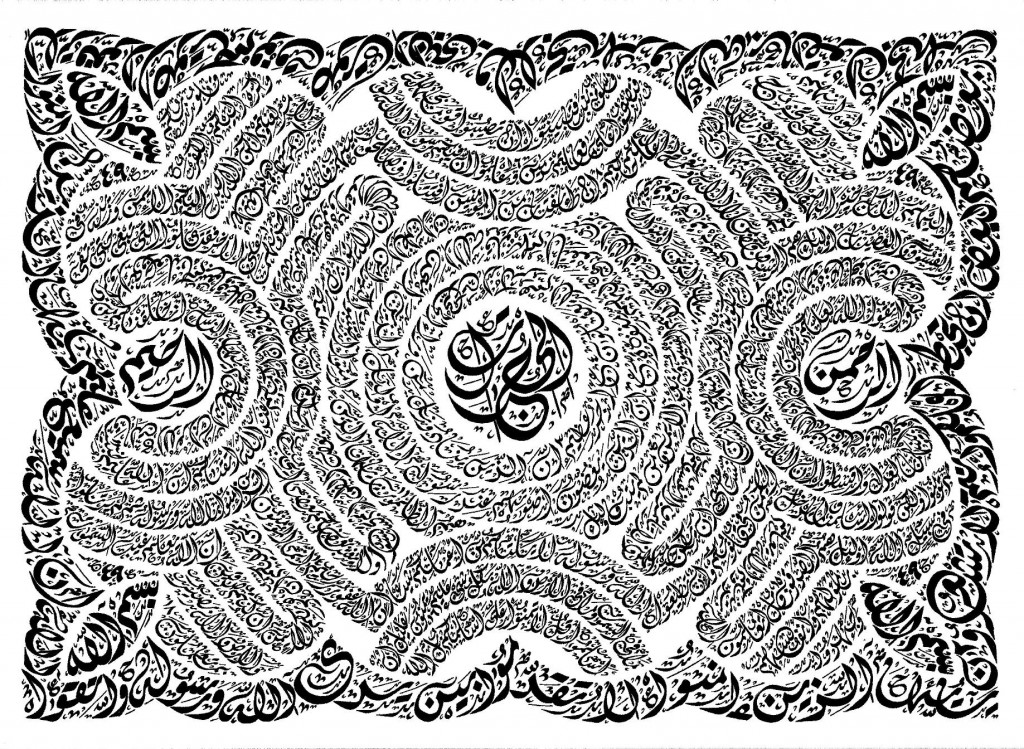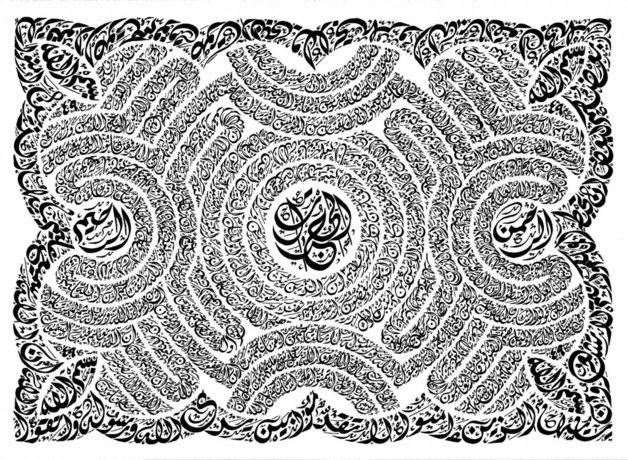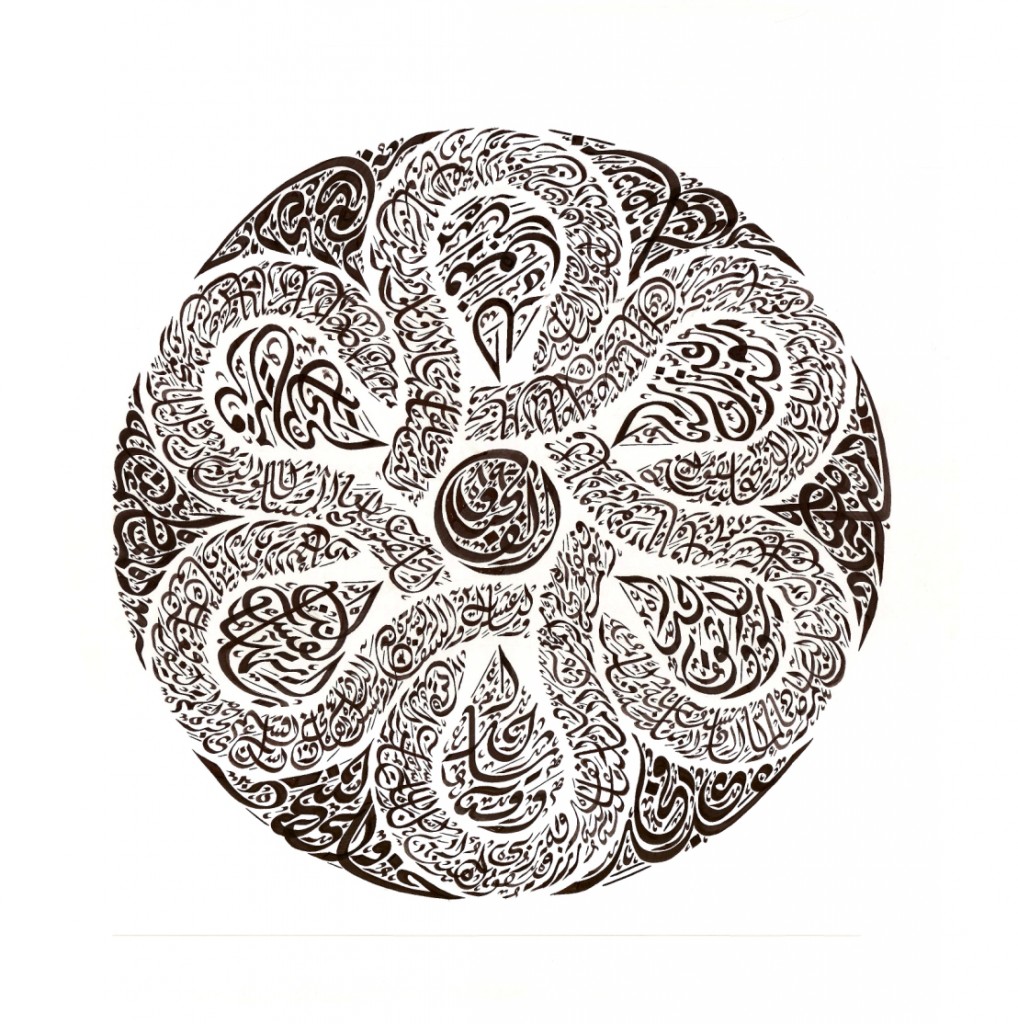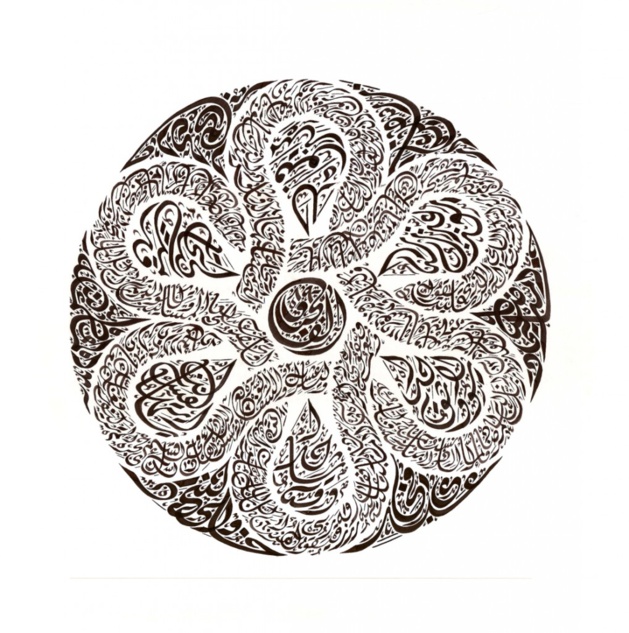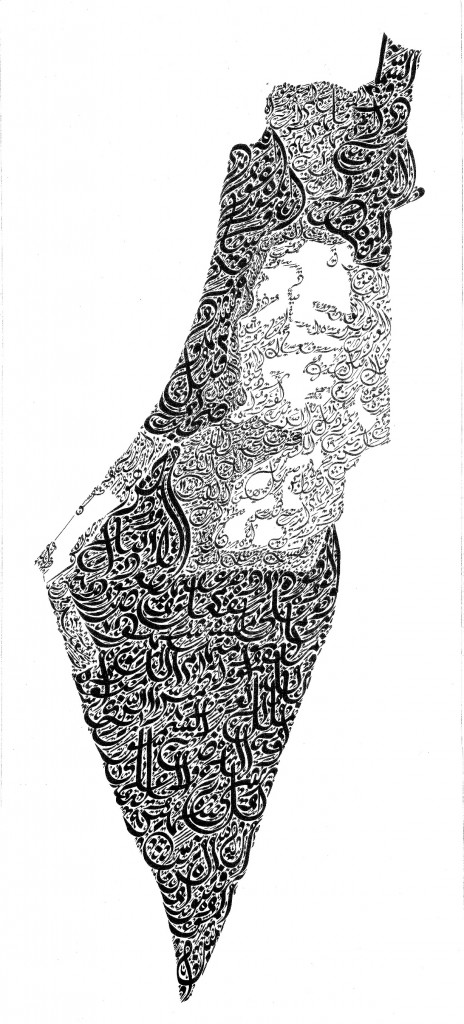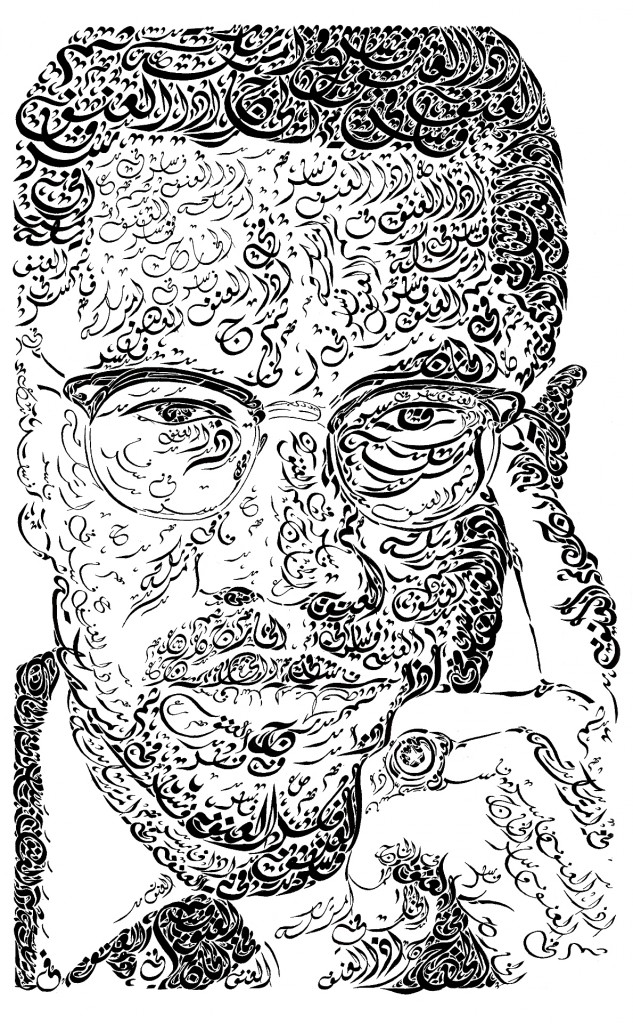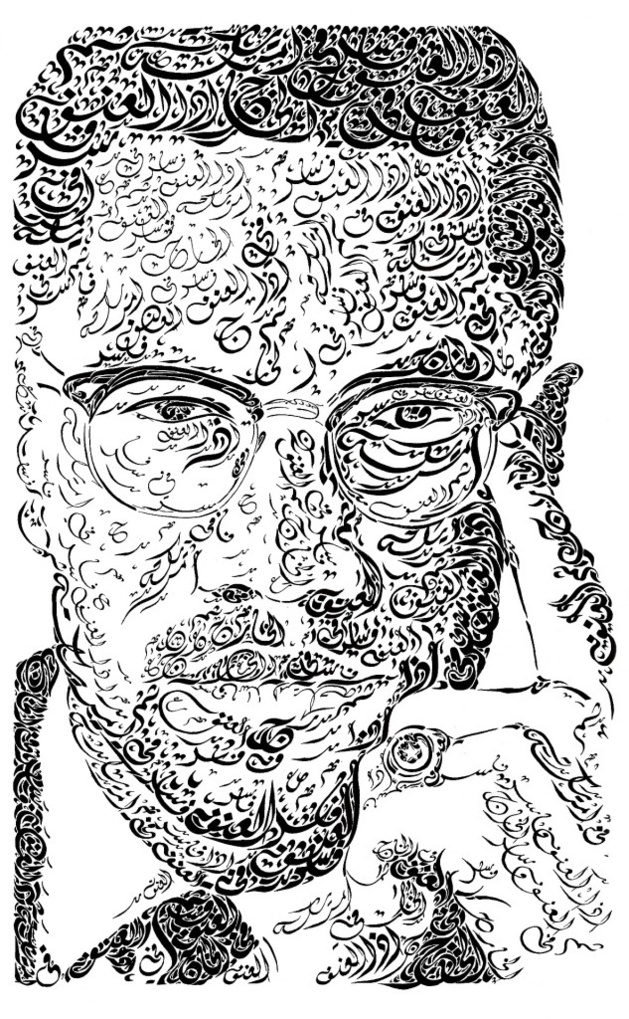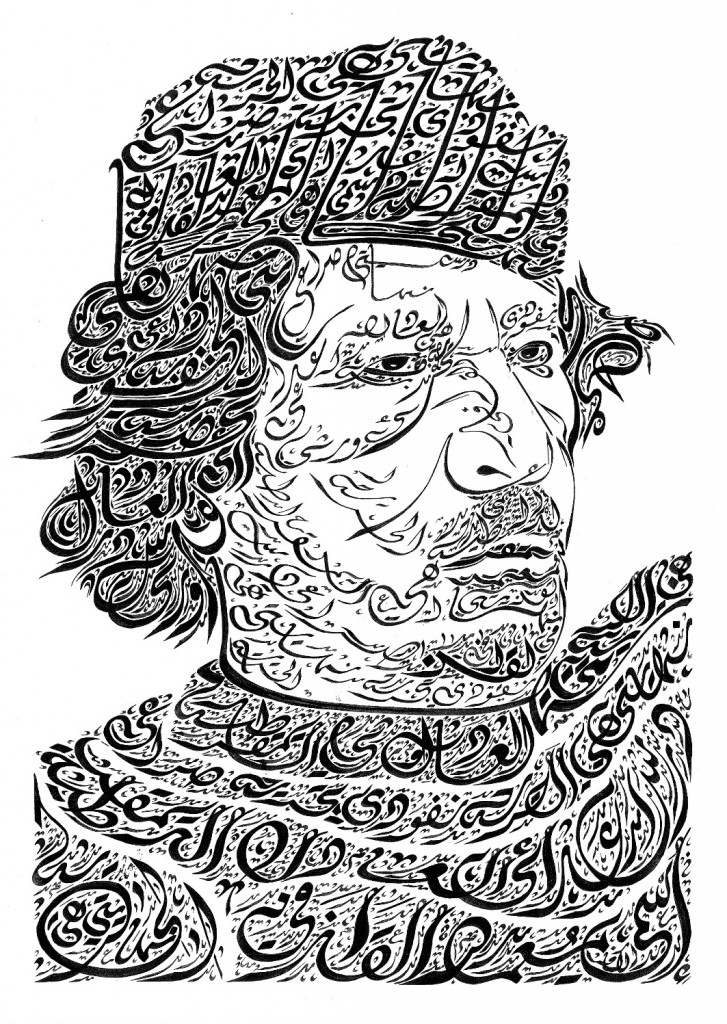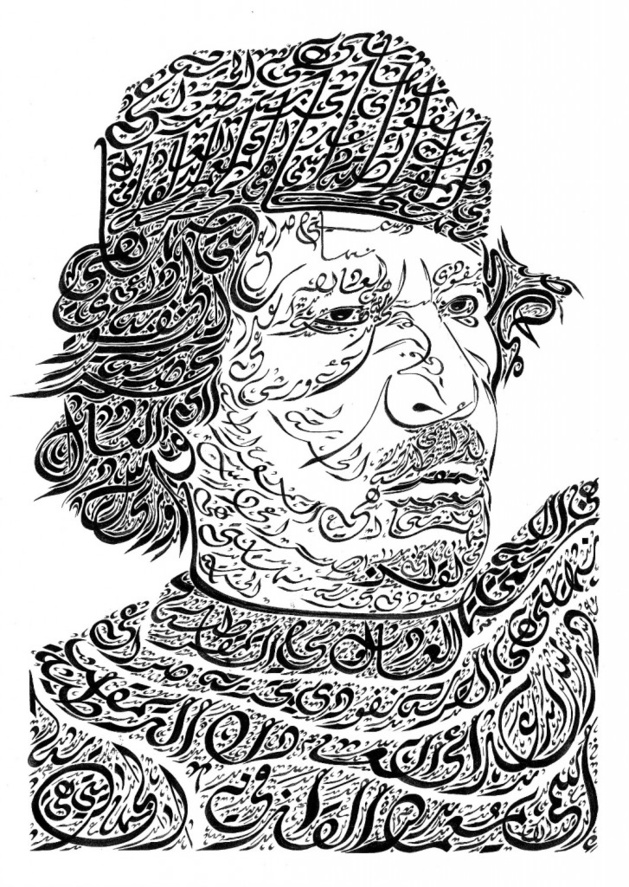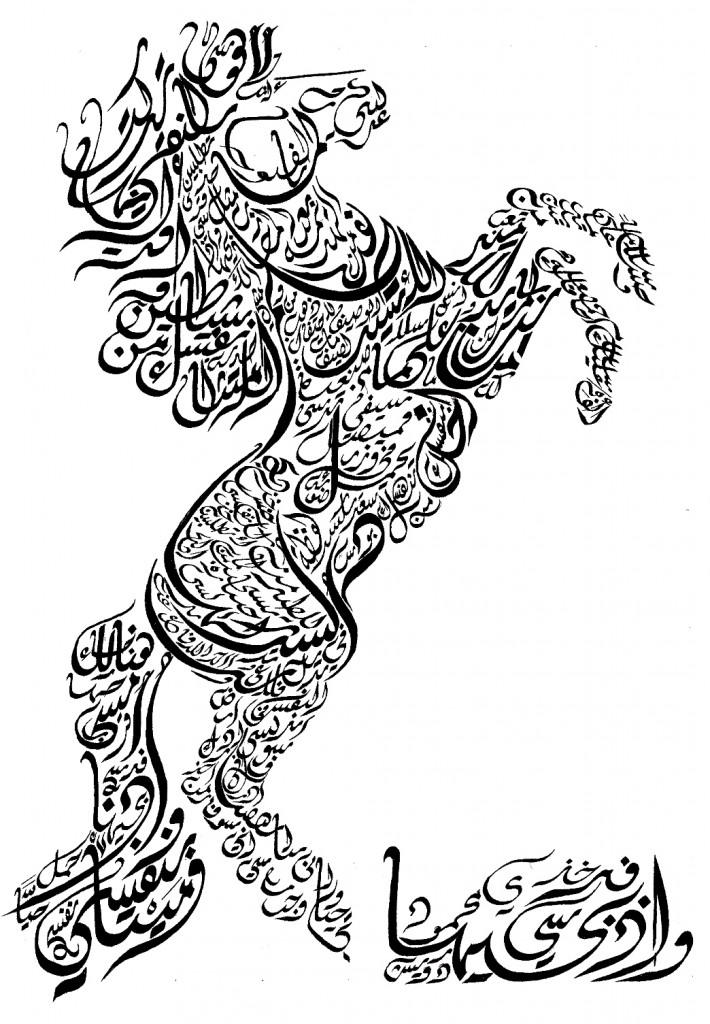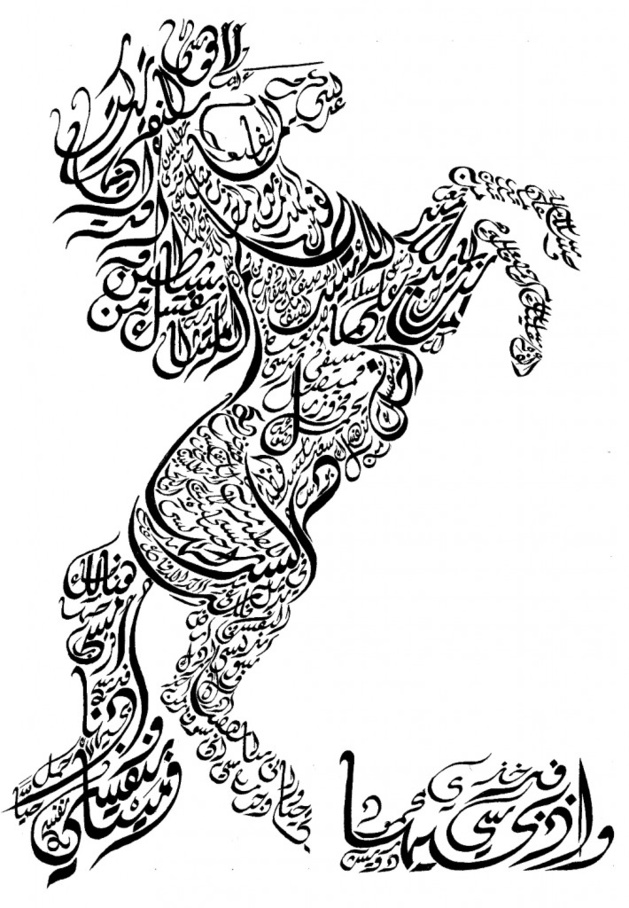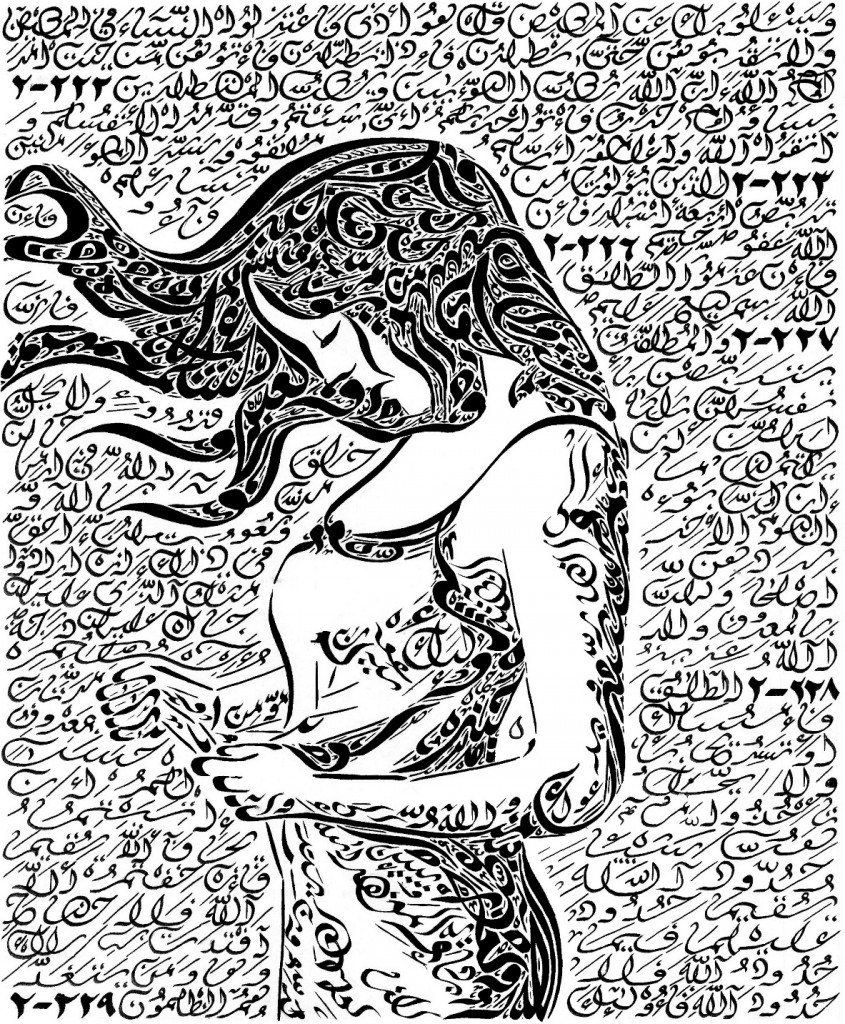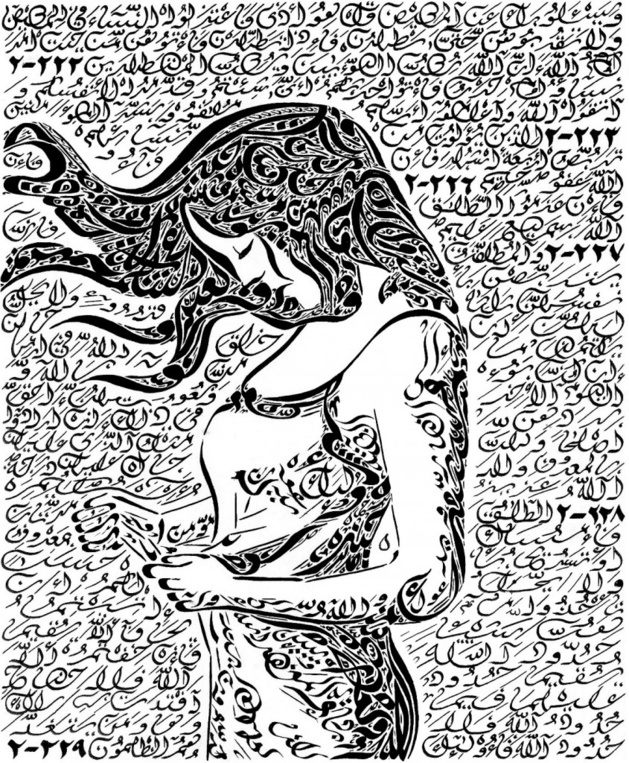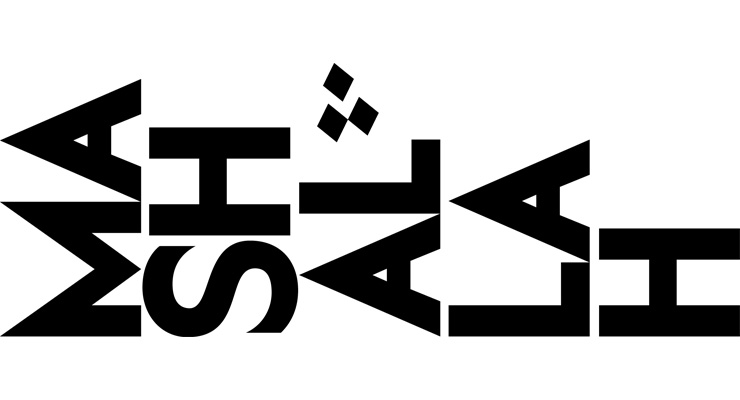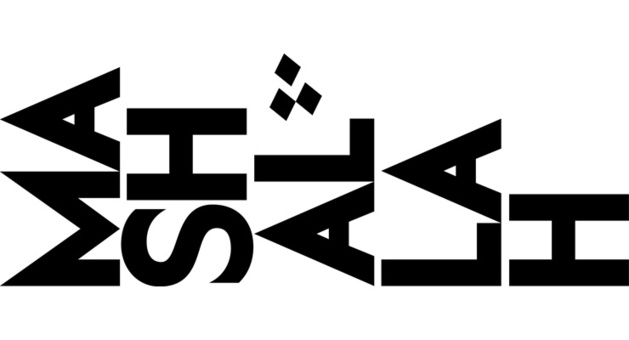What pushed you to become a calligrapher, at the time when this art becomes rarer and rarer?
Simply put, it’s very relaxing and a lot of fun. I’ve always admired Islamic calligraphy but it wasn’t until I lived in Damascus that I began formal training, under master calligrapher Adnan Farid. Since then I’ve practiced on my own and studied under a couple of other teachers. There have been very few days since then that I haven’t been writing. I actually get stressed out if I go too long without my calligraphy fix. It began as a hobby, and now it’s my livelihood. But in all honesty, I wouldn’t call myself a calligrapher: I’m more of an artist whose medium is calligraphy. I’ve only had extensive training in one script, Diwani, which is the basis of all of my work. I still have a lot of training and learning to do until I can comfortably call myself a calligrapher, which is why I have moved back to the Middle East.
Simply put, it’s very relaxing and a lot of fun. I’ve always admired Islamic calligraphy but it wasn’t until I lived in Damascus that I began formal training, under master calligrapher Adnan Farid. Since then I’ve practiced on my own and studied under a couple of other teachers. There have been very few days since then that I haven’t been writing. I actually get stressed out if I go too long without my calligraphy fix. It began as a hobby, and now it’s my livelihood. But in all honesty, I wouldn’t call myself a calligrapher: I’m more of an artist whose medium is calligraphy. I’ve only had extensive training in one script, Diwani, which is the basis of all of my work. I still have a lot of training and learning to do until I can comfortably call myself a calligrapher, which is why I have moved back to the Middle East.
Why do you think calligraphy is still relevant nowadays?
As the most Arab and Islamic of art forms, I think calligraphy is not only relevant but essential. It’s a celebration of the Middle East. Just look at Hamra street in Beirut, despite the fantastic cultural heritage of Lebanon and the Middle East, it looks no different than any street in Europe or the US except for the calligraphy in the signs. With calligraphy, you can sing an Arabic song on a piece of paper, evoking the same feelings that a singer would have but in a different way. It’s an endlessly versatile medium.
As the most Arab and Islamic of art forms, I think calligraphy is not only relevant but essential. It’s a celebration of the Middle East. Just look at Hamra street in Beirut, despite the fantastic cultural heritage of Lebanon and the Middle East, it looks no different than any street in Europe or the US except for the calligraphy in the signs. With calligraphy, you can sing an Arabic song on a piece of paper, evoking the same feelings that a singer would have but in a different way. It’s an endlessly versatile medium.
Do you have someone you look up to in calligraphy?
My biggest role models in calligraphy would be Jila Peacock and Hassan Musa. Jila, an Iranian calligrapher and artist, is best known for her flawlessly legible use of Hafez’s poetry in the Nasta’liq script to create the shape of various animals, beautifully celebrating the literary heritage of Iran. Meanwhile Hassan Musa, a Sudanese calligrapher, creates amazingly vivid detailed images using strokes found in Islamic calligraphy, without actually writing any text. My work aims to eventually merge these two styles by creating vivid three dimensional images, using a text that can be easily followed and read, but I’ve still got a long way to go. And of course, Hassan Massoudy ‘s wonderful use of color and delicately balanced images are idolized by any contemporary artist using Islamic calligraphy in their work.
My biggest role models in calligraphy would be Jila Peacock and Hassan Musa. Jila, an Iranian calligrapher and artist, is best known for her flawlessly legible use of Hafez’s poetry in the Nasta’liq script to create the shape of various animals, beautifully celebrating the literary heritage of Iran. Meanwhile Hassan Musa, a Sudanese calligrapher, creates amazingly vivid detailed images using strokes found in Islamic calligraphy, without actually writing any text. My work aims to eventually merge these two styles by creating vivid three dimensional images, using a text that can be easily followed and read, but I’ve still got a long way to go. And of course, Hassan Massoudy ‘s wonderful use of color and delicately balanced images are idolized by any contemporary artist using Islamic calligraphy in their work.
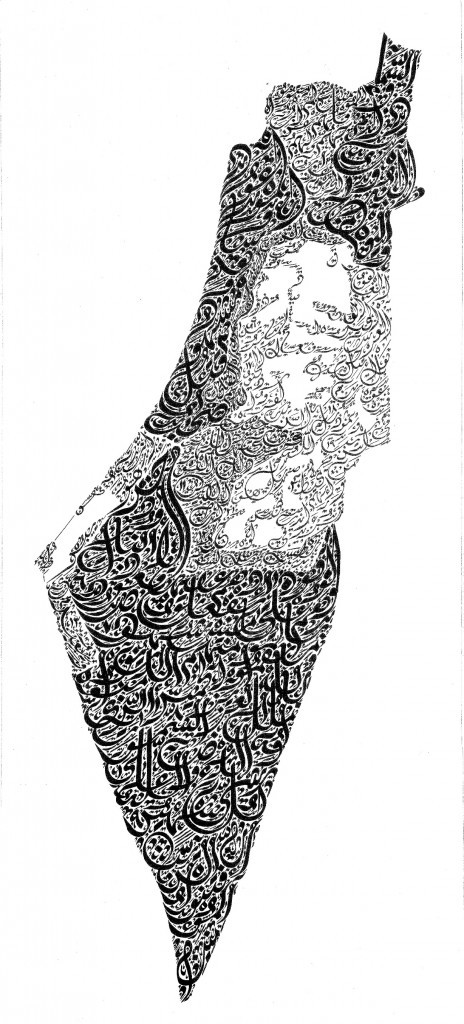
In your view, what is the most beautiful calligraphy piece?
The most beautiful piece of calligraphy in my view would be a complete Quran, in any script. After all, the words are the most important aspect of any piece of calligraphy. Although I am not Muslim, the beauty not only in the poetry but also in the physical shape and balance of the words and letters is undeniable. The letters of the Quran fit and dance easily and perfectly with each other in an uncanny way, that is never as easily replicated when writing in my own words or those of famous Arab poets.
More importantly, without the reverence and necessity of preserving the Quran, Arabic calligraphy as we know it would not exist. The importance of the Quran coupled with the banning of iconography in Islam made calligraphy the highest form of art for more than a thousand years in societies that were the most liberal and enlightened in the world during most of this time. This enduring reverence allowed Islamic calligraphy to reach a height of perfection and beauty not found in any other form of writing in human history.
Everitte’s website: www.everitte.org
The most beautiful piece of calligraphy in my view would be a complete Quran, in any script. After all, the words are the most important aspect of any piece of calligraphy. Although I am not Muslim, the beauty not only in the poetry but also in the physical shape and balance of the words and letters is undeniable. The letters of the Quran fit and dance easily and perfectly with each other in an uncanny way, that is never as easily replicated when writing in my own words or those of famous Arab poets.
More importantly, without the reverence and necessity of preserving the Quran, Arabic calligraphy as we know it would not exist. The importance of the Quran coupled with the banning of iconography in Islam made calligraphy the highest form of art for more than a thousand years in societies that were the most liberal and enlightened in the world during most of this time. This enduring reverence allowed Islamic calligraphy to reach a height of perfection and beauty not found in any other form of writing in human history.
Everitte’s website: www.everitte.org














